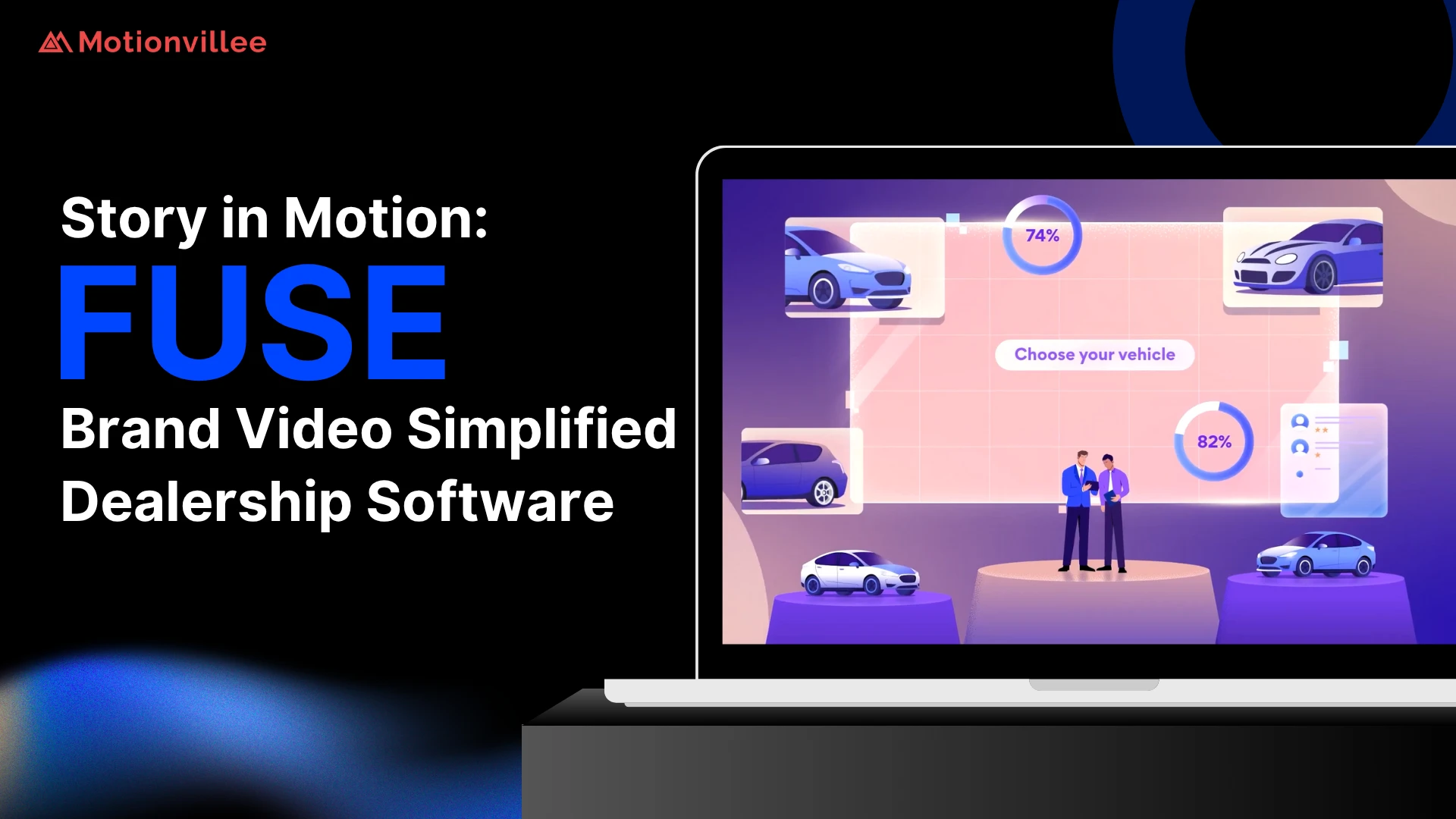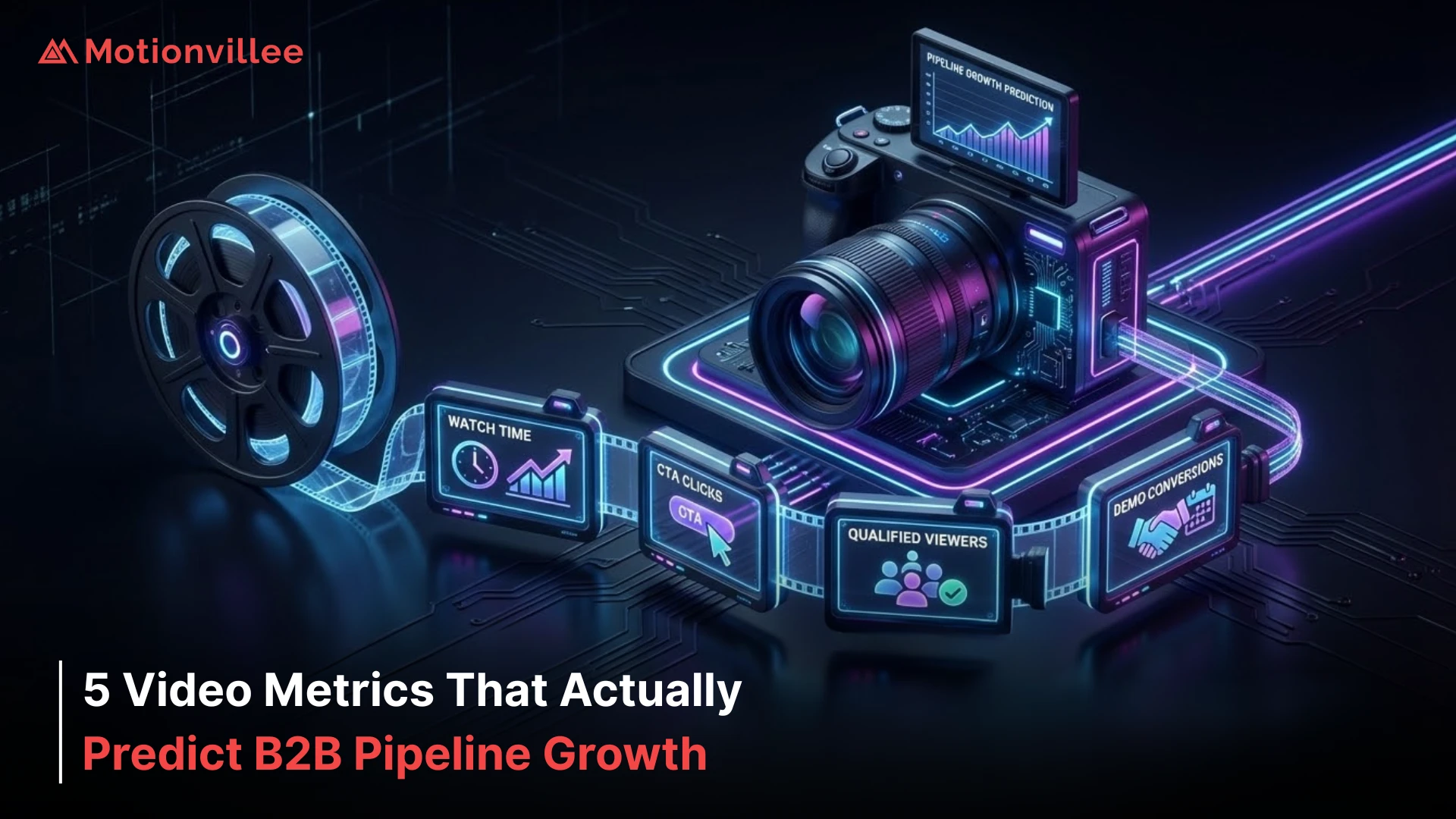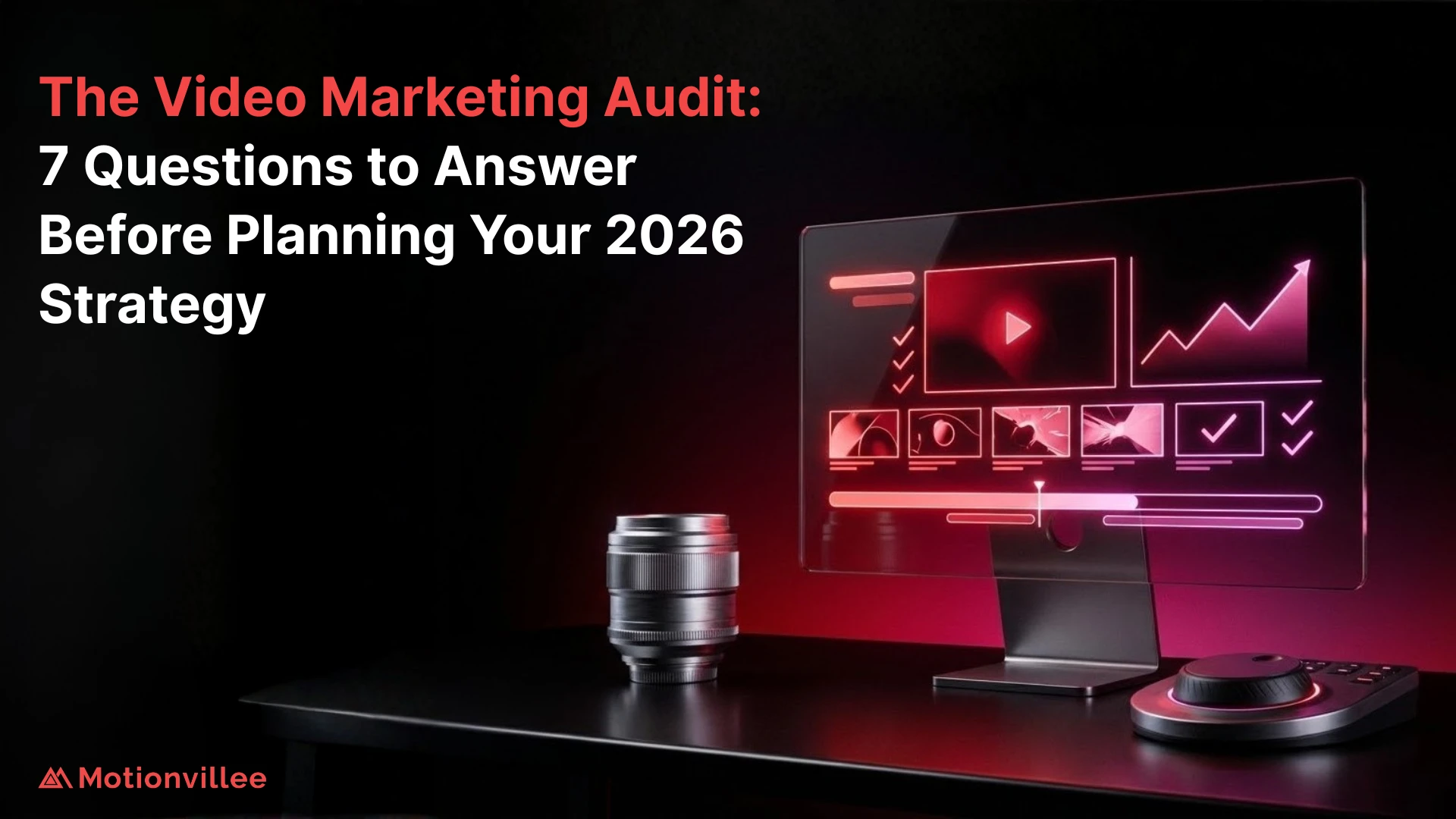From Feature Lists to Feeling: How Brand Story Transformed Software Positioning
Explaining all-in-one dealership software without brand explainer video and overwhelming prospects is a challenge every comprehensive platform faces. When your product handles inventory, financing, signatures, and customer relationships, where do you even start?
Fuse faced this exact problem. Their platform genuinely simplified dealership operations, but explaining how required walking through features that, when listed, sounded complex rather than simple. Feature lists don’t communicate value or build the emotional connection that drives software adoption decisions.
Their solution was to create a brand explainer video that led with narrative rather than capabilities. Instead of showing what Fuse does, Motionvillee crafted a story about what Fuse stands for: turning dealership chaos into a smooth, controlled experience. This approach made complex software relatable and memorable through metaphor and emotion.
The results proved the strategy. Sales teams gained a powerful positioning tool. Prospects immediately grasped Fuse’s value. The video became the north star for how the entire company explained itself across every context, from investor pitches to trade show booths.
What Challenge Was Fuse Facing With Their Positioning?
Fuse needed to communicate their all in one dealership platform’s value without overwhelming prospects with feature complexity, requiring a brand narrative that simplified positioning while building emotional connection.
The platform itself was comprehensive. Fuse handled inventory management, financing workflows, digital signatures, CRM functionality, and customer communication. Each feature solved real problems, but together they created a positioning challenge: too many capabilities dilute the core message.
Fuse’s comprehensive platform included:
- Inventory tracking and management across multiple locations
- Integrated financing with multiple lender connections
- Digital signature workflows reducing paperwork
- Customer relationship management and follow up automation
- Analytics and reporting for sales performance
Traditional explainer video services approaches focused on demonstrating each feature sequentially. This created cognitive overload. Prospects watching feature walkthroughs understood what Fuse did but not why it mattered or how it would transform their daily experience. The technical approach failed to create urgency or emotional buy in.
The target audience made this challenge more acute. Dealership owners juggle dozens of priorities. Sales managers face constant pressure to hit targets. Individual salespeople need tools that make their jobs easier, not more complicated. None of these audiences had time or patience for lengthy feature explanations.
What Fuse needed was dealership software video that cut through complexity immediately. They required brand level storytelling that let prospects see themselves in the problem and feel the relief of the solution. Product explanation could come later, once emotional connection was established and attention was earned.
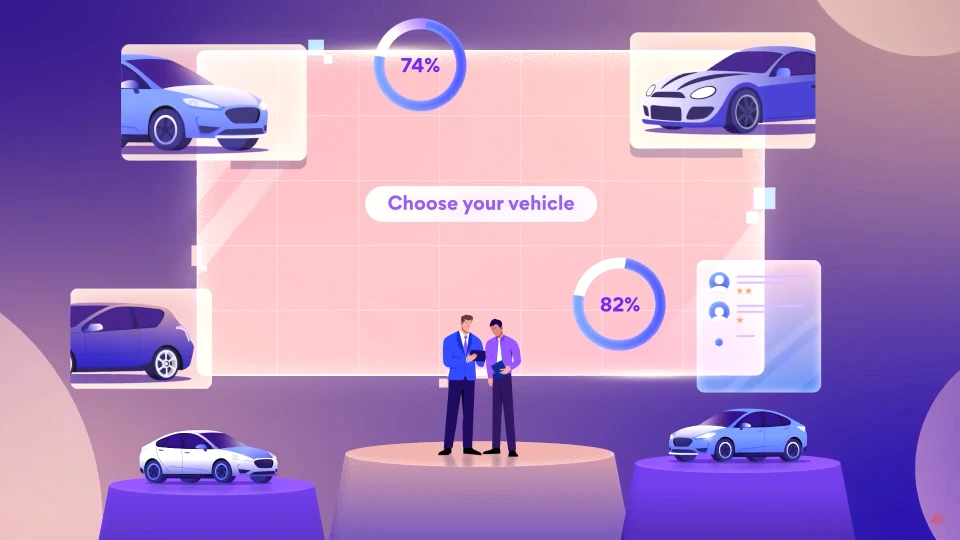
Why Do Complex Software Platforms Struggle With Clear Positioning?
Multi feature platforms face the everything and nothing problem where listing all capabilities makes the core value proposition unclear, causing prospects to disengage rather than understand.
Feature overwhelm is a documented cognitive phenomenon. When presented with long lists of capabilities, human brains struggle to prioritize what matters most. Everything sounds important, so nothing stands out. This creates the paradox where comprehensive software brand video actually communicates less effectively than focused, simplified messaging.
The does everything positioning fails because it makes prospects work too hard. They must translate each feature into personal relevance, imagine how it fits their workflow, and synthesize multiple capabilities into a coherent value story. Most prospects won’t do this mental work. They’ll move to competitors with clearer, simpler positioning even if those competitors offer less functionality.
Why technical specifications create emotional disconnect:
Technical features appeal to logic but software adoption decisions include significant emotional components. Prospects need to feel confident in the change, trust the provider, and believe implementation won’t create more chaos than it solves. Feature lists don’t address these emotional concerns.
Competitors in the dealership software space typically position themselves around specific capabilities: best financing tools, easiest inventory management, or strongest CRM. This creates clarity through narrowness. Fuse’s all in one advantage became a positioning liability without a unifying narrative that made comprehensiveness feel like simplification rather than complexity.
The cognitive load problem intensifies in high pressure industries like automotive retail. Dealership personnel operate in constant motion with limited time for evaluation. Software that requires extensive explanation to understand gets deprioritized regardless of actual quality or value. Clear beats comprehensive when attention is scarce.
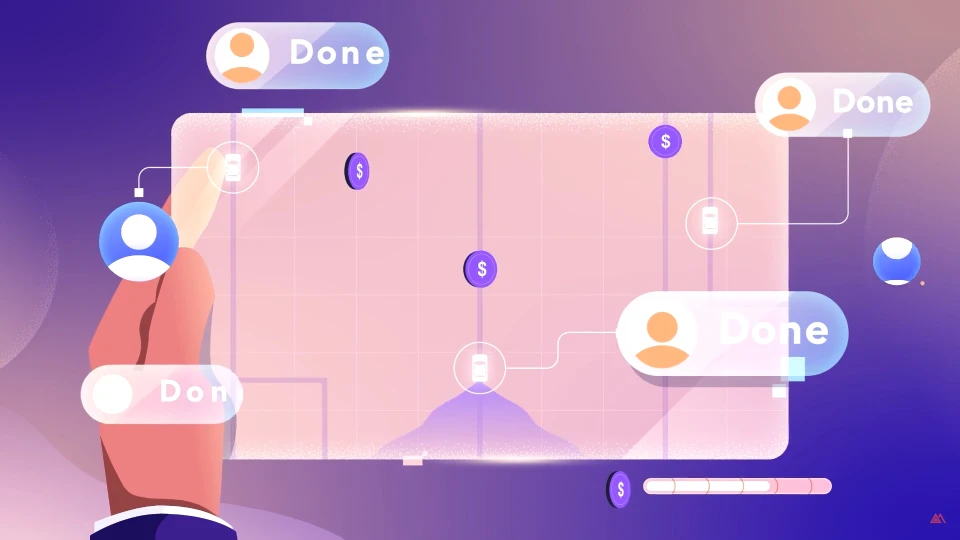
How Did Motionvillee Approach Fuse’s Brand Story?
Motionvillee built Fuse’s explainer around a universal metaphor transforming the bumpy ride into a smooth ride, making abstract software benefits relatable through a journey every salesperson understands.
The strategic decision to lead with brand story rather than features came from recognizing that Fuse’s real value wasn’t the feature set. It was the transformation those features enabled: turning chaotic, fragmented dealership operations into a smooth, unified experience. This transformation deserved narrative treatment, not technical documentation.
The bumpy ride metaphor development started with deep customer research. What did dealership staff actually experience daily? Constant interruptions. Tools that didn’t talk to each other. Lost information between systems. Deals slowing down because of administrative friction. These frustrations translated perfectly into the visual metaphor of speed bumps and rough terrain on a journey.
How the narrative mirrors dealership pain points:
Every speed bump in the visual story represents an actual operational challenge. Switching between systems. Waiting for financing approval. Tracking down paperwork. Customers getting frustrated with delays. The metaphor wasn’t arbitrary. It was carefully mapped to real experiences that Fuse’s audience immediately recognized as their daily reality.
Visual storytelling through explainer video production allowed concrete representation of abstract problems. You can’t film “feeling overwhelmed by disconnected tools,” but you can show a vehicle hitting speed bump after speed bump, each obstacle representing a workflow interruption. This metaphor based storytelling made the intangible tangible.
The transformation arc followed a classic structure: chaos to control to confidence. The video opened with a dealership stuck in rough terrain, stressed and struggling. Fuse entered as the element that smoothed the journey. The conclusion showed a thriving operation moving efficiently toward success. This progression mirrored the customer journey Fuse enables.
Why metaphor works better than literal demonstration for brand positioning became clear during development. Showing actual software screens and workflows would have reinforced the complexity perception. Showing a smooth ride after a bumpy one communicated simplification instantly, emotionally, and memorably without requiring prospects to understand technical details.
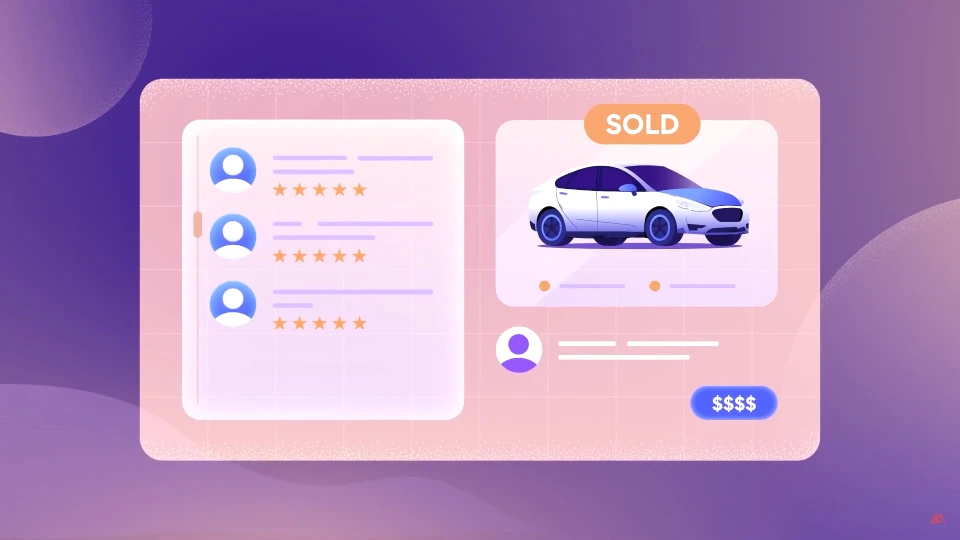
What Makes the Visual Storytelling Effective?
Motion graphics allowed Motionvillee to visualize abstract dealership challenges including stress, lost opportunities, and slow deals as literal obstacles in a journey, making problems tangible before showing Fuse as the solution.
The opening scene established immediate recognition. A dealership environment that felt stuck, with stressed teams, visible frustration, and the sense that something wasn’t working. This wasn’t specific enough to be one dealership’s story but universal enough that every viewer saw their own situation reflected.
Visual representation of daily chaos used the journey metaphor systematically. Speed bumps represented workflow interruptions. Rough terrain symbolized the friction of disconnected systems. Obstacles in the path stood for deals getting stuck in administrative processes. Each visual element mapped to a specific pain point Fuse addresses.
The transition moment when Fuse entered changed everything:
The video didn’t just introduce a logo or product name. It showed the road smoothing out, obstacles disappearing, and the pace quickening. The visual transformation represented what Fuse does without explaining it technically. Viewers understood the promise instantly through visual metaphor.
The after state contrasted sharply with the opening. Smooth, fast, controlled operation. Confident movement toward goals. Teams working in sync rather than fighting friction. This destination state was aspirational but achievable, showing prospects their potential future rather than drowning them in feature specifications.
Color palette and design choices reinforced Fuse’s brand identity throughout. Modern, clean lines suggested efficiency. Confident color choices conveyed reliability. The visual style matched what video animation for business demands: professional enough to build trust, dynamic enough to hold attention, and cohesive enough to feel like a premium brand experience.
Pacing strategy used tension and release deliberately. The problem section moved with jerky, uncomfortable rhythm mirroring the chaos it depicted. The solution section transitioned to smooth, confident movement. This emotional pacing made viewers feel the relief Fuse provides before cognitively processing the message.
Motion graphics served this concept better than live action ever could. Filming actual dealerships would have required specific locations, faced lighting challenges, and grounded the story in particular details rather than universal truths. As an animated explainer video company, Motionvillee had the flexibility to create purely metaphorical visuals that communicated feelings and transformations impossible to capture with cameras.
The motion graphics brand video approach also provided brand control and scalability. Every visual element reinforced Fuse’s identity. Nothing distracted from the core message. The style could extend to future content maintaining visual consistency as Fuse’s messaging evolved.

How Does the Narrative Structure Build Emotional Connection?
The video follows a classic story arc where struggle, intervention, and transformation create emotional resonance by letting viewers see themselves in the problem before presenting Fuse as the answer.
Act 1 established the relatable problem that every dealership faces. Not a specific dealership’s unique challenge, but the universal chaos of managing complex operations with inadequate tools. This recognition moment is critical. When prospects see their own frustration reflected accurately, they trust that the storyteller understands their world.
Act 2 introduced the solution through Fuse’s entry into the narrative. The intervention wasn’t presented as magic or overnight transformation. It showed as a stabilizing force, the element that brings order to chaos and enables the smooth operation that was always possible but never achievable with fragmented tools.
Act 3 delivered the transformation:
The thriving dealership shown in the conclusion wasn’t aspirational fantasy. It was the logical outcome of removing friction and enabling focus on what matters: selling cars and keeping customers happy. This destination felt achievable because the video showed the journey, not just the endpoint.
Why this structure works for B2B audiences relates to how business decisions actually get made. Prospects don’t buy software because of features. They buy transformation from their current painful state to a better future state. Brand storytelling video that maps this emotional journey aligns with actual decision psychology better than feature demonstrations ever could.
Building empathy before introducing product seems counterintuitive but proves more effective. Traditional software marketing rushes to solution, assuming prospects already understand and feel their problem deeply. Fuse’s visual brand narrative spent time establishing and validating the pain, making the relief of the solution more powerful when it arrived.
The power of you’re not alone messaging cannot be overstated in B2B contexts. Dealerships often feel their operational challenges are unique failures rather than industry wide problems. Showing universal struggle normalized the experience and positioned Fuse as understanding the shared reality of their market.
Making prospects feel relief rather than just informed changes the emotional valence of the content. Information creates cognitive response. Relief creates emotional response. Emotional responses drive action more reliably than cognitive ones, especially in categories where all solutions claim similar capabilities.
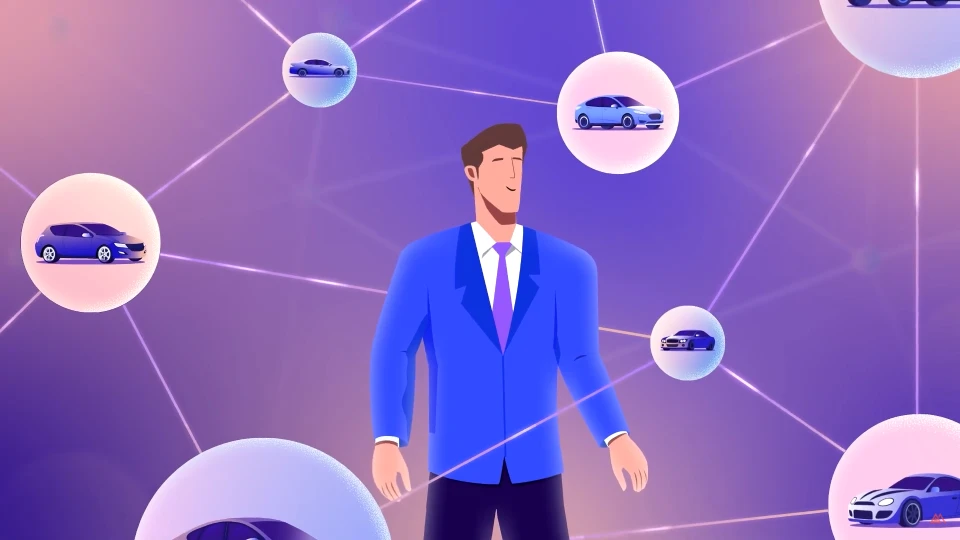
What Strategic Messaging Principles Guided the Script?
The script prioritizes philosophy over features, focusing on what Fuse stands for including simplicity, clarity, and confidence rather than what it does, creating brand differentiation in a crowded market.
Simplicity as the core brand message unified every element. The bumpy to smooth metaphor reinforced simplicity. The visual style communicated simplicity. The transformation from chaos to control exemplified simplicity. This singular focus made Fuse’s positioning immediately clear and memorable.
How every visual reinforced this theme was no accident. Professional brand video production requires strategic alignment between message and execution. Every frame supported the central idea that Fuse makes the complex simple. No visual contradicted or diluted this B2B brand narrative.
Feature integration without feature dumping:
The script mentioned capabilities but didn’t catalog them. References to inventory, financing, and signatures appeared as examples of what Fuse unified, not as a checklist to memorize. This approach satisfied the need to indicate scope without triggering cognitive overload.
The phrase steady hand and brand personification positioned Fuse as more than software. It became the partner that guides dealerships through operational complexity. This personification made the brand relatable and trustworthy, qualities that feature lists never communicate regardless of their comprehensiveness.
Positioning Fuse as a partner rather than just software elevated the relationship from vendor to ally. Partners understand your challenges, provide ongoing support, and share your success goals. Software is a purchase that might work or might not. This distinction in positioning creates very different buying psychology.
How brand positioning enables future feature additions matters strategically. When your brand stands for simplicity and control, new features fit naturally into that narrative. Feature first positioning requires explaining each new capability individually. Brand first positioning lets new features enhance the existing story without requiring messaging overhauls.
How Can Other B2B Companies Apply Fuse’s Approach?
The metaphor based storytelling framework works for any complex B2B software by identifying universal customer struggle, visualizing it as a journey, and positioning your solution as the transformation catalyst.
When to use brand story versus product demo depends on what problem you’re solving. If prospects already understand your category and need to see functionality details, product demos serve better. If prospects struggle with category understanding or your value proposition gets lost in complexity, brand story comes first.
How to identify your brand’s core metaphor:
Start with customer research. What phrases do clients use to describe their problems? What emotions do they express? And What transformations do they experience? Look for universal patterns that transcend individual customer stories. The right metaphor crystallizes common experience into a single vivid image.
Translating abstract benefits into visual narratives requires thinking cinematically. Don’t ask how to explain efficiency. Ask what efficiency looks like, feels like, sounds like. What journey represents moving from inefficiency to efficiency? What obstacles symbolize the barriers your solution removes?
Balancing emotion with information in b2b video production context means leading with emotion but backing it with substance. Pure emotion without credible capability feels manipulative. Pure information without emotional resonance feels forgettable. The balance comes from emotional framing with informational support.
Why this approach works for all in one platforms specifically relates to the positioning challenge they face. Single feature products can position on that feature. Comprehensive platforms risk sounding overwhelming. Brand narrative that focuses on transformation rather than capabilities turns comprehensiveness from a positioning liability into an asset.
The role of brand video in longer sales cycles provides early stage positioning that educates and builds preference before prospects engage with product details. In complex B2B sales, prospects spend months researching and evaluating. Brand video creates favorable impressions that influence later technical evaluation and relationship building.
What Results and Applications Followed the Video Launch?
The brand explainer video became Fuse’s primary positioning tool across sales, marketing, and investor communications, serving as a north star for how the company explains itself in all contexts.
Primary deployment on the website homepage immediately improved engagement metrics. Bounce rates decreased because visitors quickly grasped Fuse’s value proposition. Time on site increased as prospects watched the full narrative. Demo request rates improved because emotional connection preceded the ask.
Sales team usage expanded beyond initial expectations:
Opening presentations at trade shows and in sales meetings began with the video, establishing context and emotional connection before reps spoke. This consistent opening ensured every prospect started from the same understanding regardless of which salesperson they encountered.
Marketing applications across social media, paid ads, and email campaigns extracted segments for different contexts. The transformation moment became a powerful social media clip. The problem setup worked perfectly in LinkedIn ads targeting dealership managers. Email campaigns embedded the full video driving significantly higher click through rates than text based emails.
Internal alignment improved as the entire company gained shared language for explaining Fuse. Customer success teams referenced the smooth ride metaphor when training new clients. Product teams used the simplicity framework when prioritizing feature development. The brand video strategy became the foundation for company wide communication consistency.
Prospect feedback revealed emotional response beyond what data could measure. Sales calls began with prospects saying they saw themselves in the video. Trade show conversations started with visitors mentioning the bumpy ride metaphor they’d seen online. This emotional resonance created warmer leads and shorter qualification cycles.
How video simplified sales conversations showed up in call recordings. Reps spent less time explaining what Fuse is and more time discussing how it would specifically help each prospect. The video handled the foundational positioning, freeing salespeople to focus on customization and closing.
Lifespan and ongoing value of the brand asset exceeded typical marketing content. Two years after launch, the video still anchored Fuse’s positioning. Minor updates refreshed statistics but core narrative remained relevant. This longevity made the production investment more valuable over time as the cost per impression decreased while effectiveness stayed high.
What Production Decisions Enabled This Level of Storytelling?
Motion graphics provided flexibility to visualize abstract concepts including chaos, simplicity, and transformation that would be impossible or cost prohibitive with live action while maintaining brand control.
Why motion graphics versus live action for this story came down to the metaphorical nature of the narrative. Live action would have required filming actual dealerships, specific people, and concrete situations. This specificity would have limited universal relatability. Animation allowed purely metaphorical storytelling that every viewer could project their own experience onto.
The creative brief and collaboration process started with extensive discovery. Motionvillee interviewed Fuse leadership, sales teams, and customers to understand pain points deeply. This research phase identified the bumpy ride metaphor and established the emotional beats the narrative needed to hit.
Timeline and iteration approach balanced speed with quality:
Initial concepts and styleframes established visual direction in week one. Script development and storyboarding occurred in parallel through week three. Animation production took four weeks with regular review points. Revision rounds focused on pacing and emotional impact rather than starting over. Total timeline from kickoff to final delivery: eight weeks.
How visual style was developed to match Fuse’s brand required close partnership. Motionvillee analyzed Fuse’s existing brand guidelines, website design, and market positioning. The animated video production extended these elements into motion: brand colors became the palette, typography informed text treatment, and overall aesthetic reflected the modern, confident positioning Fuse sought.
Production value matched Fuse’s market positioning as a premium solution. The quality signaled that Fuse was an established, professional partner worthy of significant software investment. Lower production quality would have created cognitive dissonance with the premium pricing and comprehensive capabilities Fuse offered.
Scalability through ability to update or extend the story provides ongoing value. The modular production approach separated intro sequences, core narrative, and outro elements. This structure enables refreshing statistics, updating branding, or creating variations for different audiences without reproducing the entire video from scratch.
Brand Story First, Features Second
Fuse’s transformation from feature overwhelmed positioning to clear brand narrative demonstrates that emotional connection precedes technical understanding in effective software marketing.
The power of metaphor in B2B storytelling lies in its ability to make abstract concepts concrete and universal experiences relatable. The bumpy to smooth ride metaphor communicated simplification more effectively than any feature list or technical explanation ever could. Metaphor bypasses cognitive analysis and creates immediate emotional understanding.
Why emotional resonance matters even in software sales challenges the myth that B2B decisions are purely rational. Decision makers are human. They need to feel confident, trust their choice, and believe implementation won’t create more problems than it solves. Brand explainer video that creates emotional resonance addresses these human needs that feature demonstrations ignore.
Position brand explainer videos as strategic assets rather than marketing collateral because their value compounds over time. Marketing collateral serves campaigns and gets replaced regularly.
Strategic assets define how your company positions itself across all contexts and remain relevant for years. The investment in brand storytelling pays dividends far beyond typical content.
Ready to explore how brand storytelling could clarify your positioning? If you’re struggling to communicate complex platform value or feel your feature list dilutes your core message, schedule a call with Motionvillee. We’ll discuss how metaphor based visual narrative could transform how prospects understand and remember what makes your solution different.


